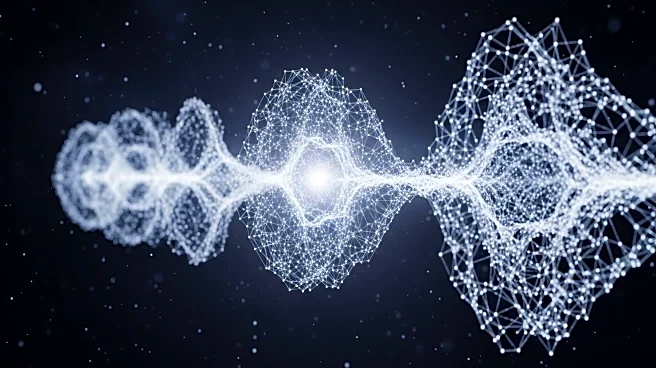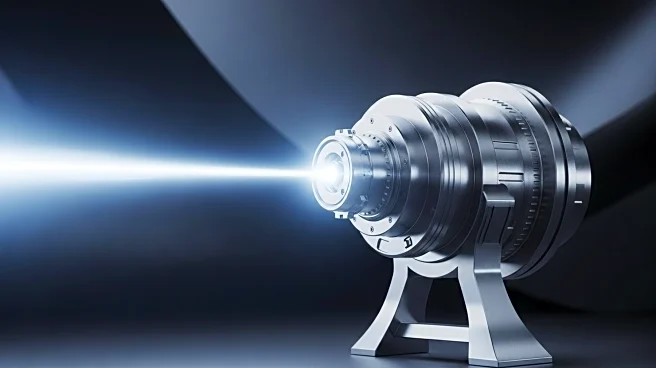What's Happening?
Researchers at ETH Zurich and the Barcelona Institute of Photonic Sciences have introduced a new method to expand the quantum wavepacket of optically levitated nanoparticles. This approach leverages quantum squeezing to increase the coherence length, allowing for the wave-like behavior of larger particles to be more precisely defined. The method involves temporarily weakening the optical trap to expand the wavepacket, then recompressing it to retain its expanded size. This advancement could pave the way for interference experiments with massive objects, a significant milestone in quantum mechanics.
Why It's Important?
The ability to expand the quantum wavepacket of nanoparticles is crucial for advancing quantum mechanics research, particularly in understanding matter-wave interference. This development could lead to new experimental possibilities with larger particles, which are typically more challenging to study due to their susceptibility to unwanted interactions. The research could have implications for quantum computing and other technologies that rely on quantum mechanics, potentially leading to breakthroughs in how quantum systems are manipulated and understood.
What's Next?
The researchers plan to further refine their method by suppressing decoherence in the optical system, which is currently a major challenge due to photon scattering. They aim to develop a hybrid approach combining optical tweezers with electrical quadrupole traps to achieve lower decoherence rates. This could enable even greater delocalization and eventually allow for quantum interference experiments with macroscopic objects, pushing the boundaries of quantum mechanics research.
Beyond the Headlines
This research highlights the ongoing efforts to bridge the gap between quantum mechanics and classical physics, particularly in understanding how wave-like properties manifest in larger particles. The ethical and philosophical implications of manipulating quantum states at such scales could lead to discussions about the nature of reality and the limits of human understanding in physics.












